I just bought a DJI Mini 2, but I can't get my head around the confusing app situation
I just bought my first drone, the DJI Mini 2 . Not only is it near the top of our list of the best drones , but its lightweight nature makes the rules around flying it lax - perfect for a first-time flyer. What's not so perfect, however, is just how confusing the thing is to set up.
I'm not talking about assembling the drone - stickers on the body (which you can see in the above picture) make it easy to unfold the limbs and remove the gimbal protector. No, I'm talking about the app situation.
Now I'm no drone expert, but I do install and play around with apps as part of my day job, so this shouldn't have been the chore for me that it turned out to be. DJI has so many different apps that it's incredibly confusing working out which one I was supposed to be use.
DJI Go? More like DJI No
When I had become familiar with the design of the DJI Mini 2, charged up its batteries and perused through the instructions manual, I decided it was time to set the device up, and I knew I needed an app for that.
I remembered from the instructions that it was called something like DJI Fly or DJI Go or DJI Air, so in the search bar of the Google Play Store, I searched 'DJI'... to find numerous apps that all seemed possible.
There was DJI Go, DJI Go 4 and DJI Pilot, as well as two other apps from the company which seemed clearly not the right ones. None of them had a user rating above 1.4 stars which... isn't great, and made them seem at a glance all to be fake apps.
So which was the right one? DJI Go said it was 'For products before P4' while the Go 4 said 'For drones since P4' - as a first-time drone buyer, I had no idea what the P4 was or whether the Mini 2 was before or after it.
To find more answers I had to wade into each separate app description, skim for the list of supported devices, and check mine off against them... which is when I realized that none of these three apps was actually the right one.
I had to go deeper by Googling on my phone 'dji app mini 2' which brought me to the DJI website - here I discovered that the correct app wasn't Go, Go 4 or Pilot, but a fourth one called DJI Fly which just didn't show up in the Play Store at all.
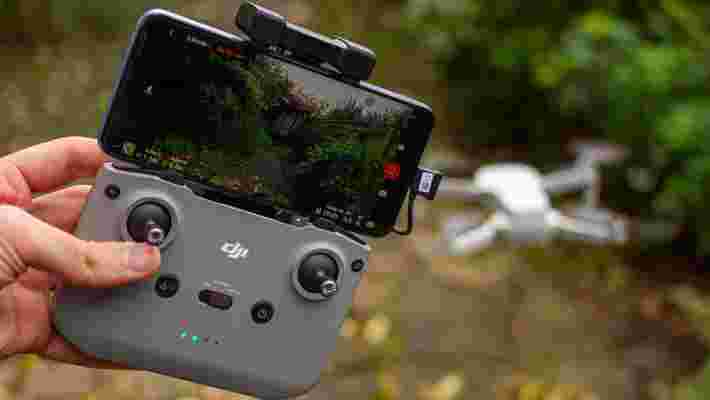
I had to side-load this via DJI's website, which isn't exactly a perfect solution given the inherent risks with downloading and installing apps outside the Play Store. This entire process, of researching and fiddling with apps, took me about half an hour - much longer than you'd think installing an app to set up a drone should do.
After all this, the app thankfully did work and I was able to set up my new cinematography tool. But this is a far messier process than it should be.
Things shouldn't be this confusing...
In our list of the best drones, we call the DJI Mini 2 "the best drone for beginners" - that's partly why I bought it, because I want to take great sweeping landscape videos, and decided the Mini would be a great way to learn.
But if setting up a drone is such a pain, it might push away other people who were keen to learn to fly - and who'd also spent loads of money on a new flying camera.
Drones are a scary thing to use - when I took the Mini 2 out of the case I was terrified, because it's small and dainty and I knew one drop could put it out of action. The dangers of flying, plus the rules about where you can fly, and what qualifications or certifications you need to do so, will likely put loads of people off.
DJI needs to make it as easy as possible for people to start using its products, to allay their fears as much as possible and get them using the drone quickly. If you're stuck for half an hour, trying to work out which app to download, that's just going to escalate the worries.
What's the solution? Simple: have just one app that works with all the drones. Oh, and DJI should really look into why everyone is giving the app 1-star reviews too - at a first glance, I thought it was a scam app, not the correct and official DJI one.
Now that I'm in, the app looks useful, with guides on restricted zones and training programs for beginners like me. I just wish it had been easier to get the thing working in the first place.
Sleeplessness at night: how insomnia affected me and how I dealt with it
Insomniacs the world over know what it’s like not to be able to sleep. Whether that’s the inability to fall asleep easily or to stay asleep, the result is the same: sleepless nights, insomnia anxiety, followed by exhausting days.
I was a chronic insomniac for decades, and would lie awake for hours and hours, my mind whirring with thoughts. The more tired I became, the more wired and engaged my mind became, ironically.
And then insomnia anxiety would take hold – the worry that I wouldn’t be able to get to sleep but had to be up for work first thing, which put me in a state of fight or flight, with all the sleep-sabotaging hormones that come with that, when I needed to be in a state of rest and digest. A predictable, infuriating waste of time, at the very least, but also a stressful routine that was destabilising at times.
Running on empty
Our nights feed into our days and a lack of quality sleep impacts everything about our waking hours: how much energy we have, our health, cognitive function, moods, resilience, happiness, productivity….
Pre-kids I was more able to work around this, slipping into social jet lag, with long weekend lie-ins to make up for the lack of sleep midweek. But while that social jet lag seemed to help in the moment, it was actually disrupting my sleep-wake cycle and was no solution in the long-term.
At its peak, my chronic insomnia left me feeling exhausted come morning, with recurring burn-out days and my emotions were far from even. With no understanding of sleep or what shapes it, I just struggled on, not realising that this sleep-deprived night-day circle is something that can be actively controlled and changed for the better.
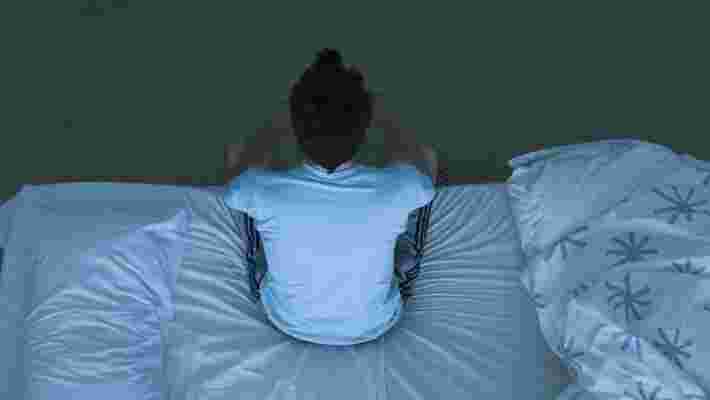
Tactics that didn’t touch my insomnia
Lavender oil, eye shades, ear plugs, sleepy teas, herbal remedies and the rest can all help, but unfortunately they are not enough to break chronic insomnia, or to deal with the actual causes behind any difficult sleep problems.
Prescription sleeping tablets acted as a vital safety net for me, for those late, late nights, when anxiety threatened to escalate, and it was essential I got a few hours sleep before the alarm went off. Thankfully, they’re not needed anymore.
The fact is, our sleep is individual, the result of what is going on in our mind and body and our day, as well as the world around us, and if we can look at sleep in this wider, deeper context, we can understand why it is the way it is, and then make small changes in our day that can alter our physiology, habits and our mindset, to help set us up for the best sleep possible at night.
Knowledge equals quality sleep
Being aware of the basic biology and science of sleep and how this relates to you and your life is key to transforming the quality of your sleep. For example, by understanding habit science and how habits take hold in the brain, we can take action to establish new sleep friendly habits.
Likewise, being aware that humans are hard wired to respond to the light signals that are all around and being able to work with this is something that has a huge impact on our circadian rhythm and our sleep.
I now use a number of light tactics to structure my day, such as early morning walks, so that I’m sending the right light signals that will trigger the physiological response I need in the moment and for a strong sleep-wake pattern.
A powerful sleep habit cue
Richard Waters was a pioneer in cognitive therapy and clinical hypnosis 100 years ago and he was also my great, great uncle who first inspired me to research the biology and science of sleep.
One of the first things I did, when it dawned on me that perhaps I could fix my chronic insomnia, was to record myself reading a short sleep script written by Waters, and to start listening to this on a daily basis.
A sleep script is a positive affirmation of what should be happening in your mind and body before and during sleep and it taps into the extraordinary power of suggestion, which medics and scientists are exploring with incredible results.
Neuroscience shows that our words and thoughts change our physiology and how we actually feel. A sleep script works by helping us to adjust our mindset, physiology and behaviour, and as a result the quality of our sleep.
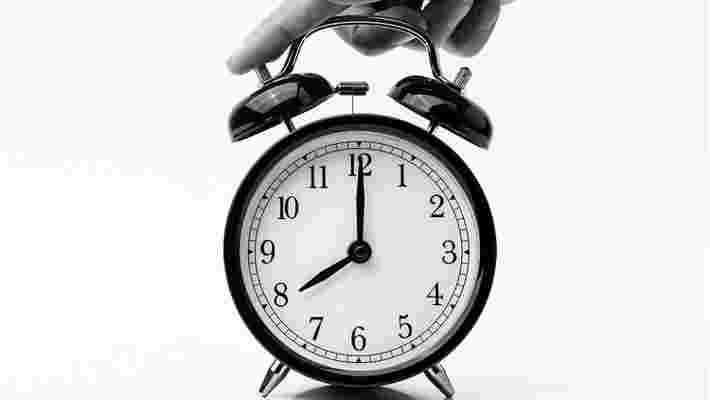
Stress busters for sleep
The stress, tension and over-stimulation of life can leave us with too much of the stress hormone cortisol in our body, which undermines both our health and our sleep.
Stress is blamed for nearly 50% of sleep issues, according to the Sleep Council’s Great British Bedtime Report, so if we can better manage our stress, then we can improve our sleep.
I researched a large number of science based stress busters for Teach Yourself to Sleep: An ex-insomniac’s guide , and obviously different tactics work for different people and can depend on the situation.
Whether it’s reframing emotions, getting out into nature or being proactive about boosting the four happy hormones – dopamine, oxytocin, serotonin and endorphins – there’s so much we can do to shift our hormonal balance in favour of sleep.
Just roll with it
It’s good to remember that sleep is never set in stone. It tends to reflect what’s going on around us, as well as within us, and most of us, even the strongest sleepers, will experience sleep issues at some point in our life, even if that is just a short-term disruption due to ill health.
By understanding our sleep in relation to our day, however, and all the elements that influence it, we can respond and adapt, and take action to strengthen our circadian rhythm and make physiological changes that put us back on the path to a deep, restorative sleep.
Read more:
This article is part of TechRadar's Sleep Week 2022 (running from Sunday 13 to Saturday 19 March), a week-long celebration of all things slumber. We'll be bringing you proven techniques and tips to help you sleep better, and have rounded-up all the top-rated tech to transform your sleep.
Your Macbook Pro or Display XDR can finally shine brighter with new macOS app
Vivid is available for Apple's Macs from today (April 4), where it can double the brightness of your Pro Display XDR or MacBook Pro 14-inch (2021) , with no loss in quality of the image.
Apple has been showcasing how bright these products can go, but this level of brightness has only been reserved for certain use cases such as editing videos and watching HDR movies. The maximum brightness has been 500 nits for both the MacBook Pro and Pro Display XDR for its users, with no override on the user's part to enable this higher brightness for other methods.
This is where Vivid comes in. Available to download as a free trial, alongside a one-off fee of $15 / £15 / AU$17 to remove the split-screen that shows the default brightness, and Vivid's settings.
On the day of its launch, TechRadar spoke to its two developers, Jordi Bruin and Ben Harraway , about how Vivid came to be, and whether there's any risk to leaving the brightness on for longer than needed.
We speak to Vivid's developers
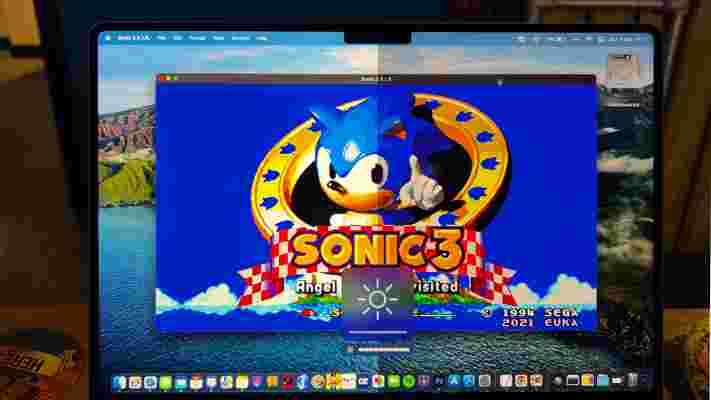
Having used Vivid before its launch, we were taken aback as to how much of a difference the full brightness made, especially with games. Playing Streets of Rage 4 on macOS through Steam, or Metal Gear Solid 5 through Parallels , really showed off what the display of the MacBook Pro 14-inch is capable of.
We asked Bruin and Harraway what prompted them to create Vivid in the first place. "Back in October of last year I received my new MacBook Pro and was very surprised when I saw the brightness of HDR videos. It made it seem like the rest of my screen was becoming dimmer when in fact the video was just getting brighter." Bruin explains.
"I like to work from different places throughout the day and often end up outside on a terrace or in a park. I tried watching some HDR videos outside and they were much more visible than the other content on the screen. After spending a few weeks working on different approaches I gave up for a few months until reaching out to Ben, who found a solution that worked great!"
Using the brightness keys on our MacBook Pro 14-inch, once you reach the maximum setting, a further option appears thanks to Vivid, where you can go even brighter, taking advantage of the display.
While there's a small hit on the battery life, it's a hit worth taking once you see how much everything pops with the extra brightness.
However, we asked Bruin and Harraway whether there was any danger to the display, in way of screen burn. "Vivid doesn’t use any hacks or low-level system calls to achieve the higher brightness. We believe that makes it really safe to use," Harraway explains.
"We don’t make your display do anything it’s not supposed to. Vivid just enables the extra brightness usually reserved for HDR content, so it’s exactly the same as watching an HDR video." Bruin clarifies.
"Apple claims the following: "Pro Display XDR can sustain 1000 nits of brightness across the full screen. This means that a pro can edit an HDR photograph or video with the entire frame at 1000 nits of brightness, indefinitely."
The official word from Apple on this topic is here . macOS has built-in protections to dim the screen if it would get too hot as well. But to be clear, we are not changing anything on the display level, we are overlaying an HDR window which triggers the extended brightness mode."
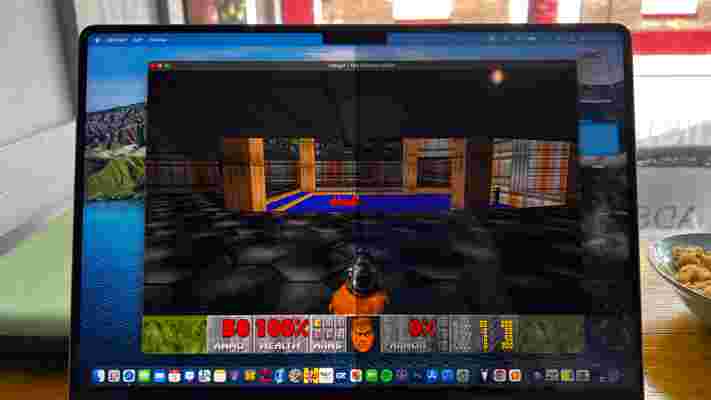
While Vivid is a simple app, it gets the job done, and the difference is night and day, especially when you're using it at night. Even though we're at the launch of the app, we wondered if there were already any features in the planning for future versions.
"We wanted to keep the first version tightly integrated with the system and easy to use, so that we could get feedback from users on what they would want to see. We have a version that includes Shortcuts and Widgets, but right now we’re not sure if those features would really add something that our customers would be looking for." Bruin explains.
"We’ve designed Vivid in a way that you almost forget that it’s an extra app since you just use your normal brightness keys to activate it. Accessibility is important for both of us, which is why we’re using as many native components as possible. After launch, we will be searching for feedback on this front to fix any issues we might have overlooked."
So far, Vivid is something that can make you look at your MacBook Pro or Display XDR in a different way, especially as you watch videos or play games. As the displays improve and the brightness gets brighter, it looks as though this app will be useful to many Mac users for the next few years at least.